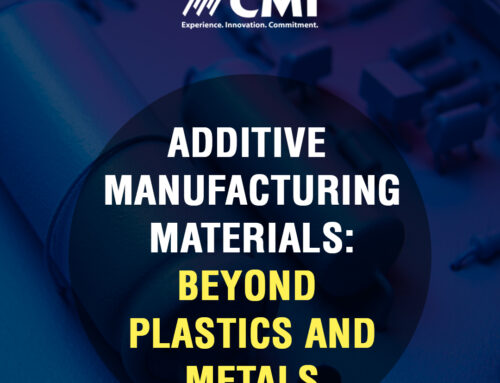Advanced coatings are crucial in various industries, offering solutions that enhance durability and functionality. These coatings provide essential protection against environmental factors, extending the lifespan of materials and reducing maintenance costs. Various techniques and innovations have been developed to improve their application, making them an integral component of modern manufacturing processes.
Incorporating advanced coatings often involves specialized techniques tailored to meet industry-specific requirements. At Custom Materials, we specialize in developing tailored coating solutions that meet diverse industry requirements. Our comprehensive services include advanced powder coating applications, high-performance liquid primers, and specialized topcoats for maximum durability and protection.
At Custom Materials, we recognize that coating technology continues to evolve, particularly in its environmental impact and sustainability. Our commitment to developing environmentally responsible products ensures that our solutions are practical and align with modern ecological standards. This dedication to sustainability allows our clients to maintain high performance while meeting their environmental responsibilities.
Key Takeaways
- Advanced coatings enhance durability and protection.
- Industry-specific applications drive coating innovations.
- Sustainability is a core focus in coating technology advancements.
Fundamentals of Advanced Coatings

Advanced coatings are critical in enhancing surface durability, functionality, and appearance. These coatings can significantly improve resistance to wear, provide thermal or electrical insulation, and protect against corrosion.
Composition and Chemistry
The composition of advanced coatings involves a mix of materials, each contributing specific properties. Typically, these coatings include binders, pigments, solvents, and additives. Binders form the film that adheres to surfaces, influencing durability and chemical resistance.
Pigments provide color and opacity, while solvents help in application by adjusting viscosity. Additives such as flattening agents or stabilizers modify the properties for specific needs. The chemistry often focuses on polymerization processes, with organic and inorganic compounds being key players. Considering environmental impact is vital, leading to a push for low-VOC formulas.
Types of Advanced Coatings
Advanced coatings can be categorized by their functional properties and applications. Ceramic coatings are often used in industrial contexts to improve wear resistance. They shield surfaces against extreme conditions like high temperatures or corrosive environments.
Polymeric coatings, standard in automotive and consumer goods, offer flexibility and are easy to apply. These materials are valued for their adaptability and range of properties, enabling customized solutions. In the electronics industry, thin-film coatings are critical for providing electrical insulation and enhancing circuit reliability. Metallic coatings, meanwhile, often provide a layer of protection and a lustrous finish.
Properties and Performance Metrics
Key properties of advanced coatings include adhesion, hardness, and elasticity, which determine their effectiveness. Adhesion ensures the coating remains bonded under stress, while hardness relates to resistance against scratches and abrasions.
Elasticity allows the coating to flex with the substrate without cracking. Performance metrics often extend to thermal resistance, chemical stability, and hydrophobicity. Coatings are tested under various conditions to meet industry standards, such as UV exposure, salt spray, and immersion tests. This rigorous testing guarantees that the coatings perform effectively where they are applied.
Application Techniques

Advanced coating techniques often rely on precise methods that ensure even application and optimal performance. The main techniques include spray methods, dip coating, and brushing and rolling, each offering distinct advantages suitable for various industrial needs.
Spray Methods
Spray methods are widely used due to their versatility and ability to cover large areas efficiently. These techniques include air spray, airless spray, and HVLP (High Volume Low Pressure) systems. Each type employs different mechanisms to atomize the coating material. Air spray uses compressed air to produce a fine mist, ideal for detailed finishes. On the other hand, airless spray operates at high pressure without air, providing thicker layers quickly. HVLP systems use lower pressure, resulting in reduced overspray and material waste. Understanding the specifics of each method helps ensure the best results for the application required.
Dip Coating
Dip coating involves immersing the substrate in a coating solution, allowing for uniform layer thickness. This method is popular in applications requiring precise thickness control and smooth surfaces. The process typically includes a series of steps: immersing the object, holding it in the solution for a specified time, withdrawing at a controlled rate, and drying or curing. These steps are crucial for achieving the desired properties in the final product. It is especially effective for smaller parts or complex geometries where other methods might struggle to achieve even coverage.
Brushing and Rolling
Brushing and rolling techniques are often employed when intricate control over the coating application is necessary. Brushes allow application in small or detailed areas that may be challenging for other methods. Rollers efficiently apply coatings to flat surfaces and ensure a consistent layer. These techniques can vary in brush or roller type, affecting the finish’s quality and consistency. They are invaluable for touch-up work or areas requiring high precision without extensive equipment.
Innovations in Coating Technology
Innovations in coating technology have introduced nano-coatings, smart coatings, and biocompatible coatings. These advancements improve durability, functionality, and safety across various applications, from industrial surfaces to medical devices.
Nano-Coatings
Nano-coatings are at the forefront of material protection, using nanoscale particles to enhance surface properties. These coatings provide excellent resistance to scratches, UV rays, and chemical exposure. Their thin application ensures that the underlying material maintains its appearance and function. For instance, self-cleaning coatings utilize titanium dioxide to break down surface contaminants when exposed to sunlight. Industries such as automotive and electronics increasingly adopt nano-coatings to protect products and prolong lifespan without compromising aesthetics or performance.
Smart Coatings
Smart coatings respond to environmental stimuli, adapting their properties for optimal performance. These intelligent coatings can change color, electrical conductivity, or water repellency in response to temperature, humidity, or pressure changes. For instance, self-healing coatings can repair minor damages automatically, enhancing longevity and reducing maintenance costs. In addition to improving functionality, smart coatings also contribute to sustainability by minimizing the need for frequent repairs or replacements. Researchers are exploring diverse uses, including energy-efficient buildings and self-diagnosing aircraft components.
Biocompatible Coatings
Biocompatible coatings ensure that medical devices are safe for use within the human body. These coatings reduce the risk of infection and rejection while promoting healing and integration with biological tissues. Unique formulations enable coatings to release drugs over time or resist bacterial colonization, providing immediate and long-term benefits. The demand for biocompatible coatings is rising, driven by increasing healthcare advancements and the need for safer medical implants. These coatings enhance patient outcomes and improve the success rate of medical device procedures.

Industry-Specific Usage
Advanced coatings are crucial for various industries, providing enhanced durability, protection, and functionality. From aerospace to marine applications, coatings are uniquely formulated to meet specific industry needs, such as resistance to environmental factors and performance improvement.
Aerospace and Aviation
Advanced coatings protect aircraft surfaces from extreme conditions, such as high-altitude UV exposure and temperature fluctuations, in the aerospace and aviation sectors. These coatings contribute to aircraft efficiency by reducing drag through smooth surface finishes.
- Corrosion Resistance: Coatings protect against corrosive elements, enhancing life expectancy.
- Thermal Control: Special coatings manage heat resistance critical in high-speed aircraft.
- Weight Reduction: Lightweight coatings help improve fuel efficiency without compromising strength.
Automotive Industry
The automotive industry relies on advanced coatings for both aesthetics and functionality. These coatings are developed to withstand environmental stressors like UV rays, moisture, and chemical exposures, thus preserving the vehicle’s appearance and value.
- Scratch Resistance: Durable coatings protect against minor abrasions.
- Corrosion Protection: Coatings slow down or prevent rust formation, which is crucial for longevity.
- Color Variability: Manufacturers leverage advances to offer various colors and finishes.
Marine and Protective Coatings
Marine environments require coatings that withstand saltwater corrosion and biotic factors like algae formation. Advanced marine coatings demonstrate superior adhesion and durability, maintaining the structural integrity of vessels and offshore structures.
- Antifouling Properties: Essential to prevent organism buildup on hulls, increasing efficiency.
- Resistance to UV Degradation: Protects surfaces from sun damage, delaying wear.
- Impact Resistance: Protects against impacts from debris, extending material life.
These coatings are designed to address marine industries’ challenges and enhance marine vessels’ operation and maintenance.
Environmental Impact and Sustainability
Environmental considerations are crucial in the advancement of coating technologies. The industry must navigate regulations while innovating sustainable solutions to reduce its ecological footprint and ensure compliance with global standards.
Regulations and Standards
Coating industries worldwide face numerous regulations designed to minimize environmental harm. These rules often focus on reducing volatile organic compounds (VOCs), contributing to air pollution. In response, manufacturers are developing low-VOC formulations to meet strict guidelines. Additionally, organizations like the World Coatings Council frequently publish reports on sustainability efforts, helping to set industry benchmarks.
Compliance with these regulations is essential for legal reasons and improves the company’s reputation and public trust. Standards also encourage the development of safer products by requiring risk assessments for raw materials and finished products.
Eco-Friendly Coating Development
The push for sustainability has led to significant advancements in eco-friendly coatings. Researchers are exploring alternatives to traditional oil-based products, such as water-based or UV-curable options, which offer lower environmental impact. Recent studies, including research published in Progress in Organic Coatings and ACS Sustainable Chemistry & Engineering, highlight the benefits of bio-based materials for coatings, improving performance in reducing global warming potential and resource use. A comprehensive review in the Journal of Coatings Technology and Research further demonstrates how these sustainable alternatives match or exceed the performance of traditional coating materials.
Manufacturers are also collaboratively creating sustainable supply chains, focusing on reducing toxins and enhancing recyclability. These innovations help meet regulatory demands and open new market opportunities for eco-conscious consumers.






